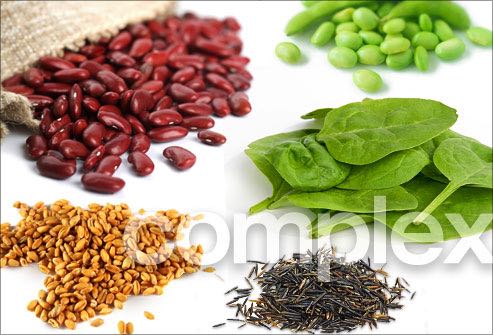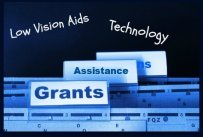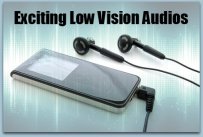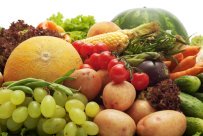complex carbohydrates
Using Complex Carbohydrates to Protect Against Vision Loss

complex carbohydrates and vision
We need carbohydrates to stay fueled throughout the day. Unfortunately, the wrong type of carbs can cause blood sugar issues, weight gain, and even vision loss. Eating a healthy diet is one of the easiest ways to help support vision health, but first we need to understand which types of carbohydrates are good and bad.
How the Foods We Eat Affect Our Eyes
Do you know the difference between simple and complex carbohydrates? Simple carbohydrates (also known as monosaccharides or “bad” carbohydrates are considered quick-release and high glycemic. This means that they break down very quickly and are immediately released as glucose. Although our bodies use glucose as fuel, a sudden increase in glucose will spike blood sugar levels. Complex carbohydrates, or polysaccharides, take longer to break down, and so help to maintain healthy blood sugar by releasing glucose over time. They are primarily made of long strands of simple sugars and are high in dietary fiber.
Many people continue to consume a high-glycemic diet, resulting in blood sugar spikes that can result in eye damage and disease. For example, high-glycemic diets can increase your risk of developing diabetes. Poor blood circulation often caused by diabetes can then increase the chances of developing glaucoma, cataracts, and diabetic retinopathy. Since our eyes require certain nutrients to function properly, poor diets can also lead to age-related macular degeneration, known to be the leading cause of vision loss in the elderly.
Thankfully, there are many foods that you can add to your diet to help support healthy vision. At the same time, however, it is imperative to know which foods to avoid.
More about “Bad” Carbohydrates
Since simple carbohydrates release glucose all at once rather than over time, our bodies typically cannot use it all as fuel. In fact, simple carbs break down so quickly that they cannot be utilized as an adequate source of vitamins, nutrients, or energy. High-glycemic foods often cause a spike in blood sugar and energy followed by a sudden crash. In addition, our bodies instead store the excess sugars, which can contribute to unwanted weight gain. This is why avoiding simple carbohydrates at night is so important, as the excess sugar will not be exercised off. Examples of high-glycemic, “bad” carbs include:
- Baked potatoes
- Refined grains, such as white breads
- Soda
- Baked sweets, include cookies and cakes
- White rice
As you can already begin to see, simple carbohydrates exist as natural, added, and refined sugars. Choose your foods wisely, and be on the lookout for bad carbs!
Examples of Complex Carbohydrates
Eating a nutritious and varied diet is one of the best ways to support healthy vision. Use the list of foods below as a handy reference to help decrease your intake of simple carbohydrates and increase your consumption of complex carbohydrates. Doing so can help regulate glucose levels and reduce the risk of developing or worsening age-related macular degeneration. In addition, most complex carbohydrates are high in three types of dietary fiber: starches, cellulose, and hemicellulose and gums. Increasing fiber intake can help regulate digestive systems and help prevent against certain types of cancers. Here are some examples of complex carbs to add to your diet:
1. Fruits:
Apple, Apricot, Banana, Blackberry, Black currant, Blueberry, Cherry, Cranberry, Cucumber, Grapefruit, Kiwi, Lemon, Lychee, Melon, Orange, Peach, Pear, Plum, Prune, Raspberry, Strawberry
2. Vegetables:
Artichoke, Asparagus, Broccoli, Brussels sprout, Cabbage, Carrot, Cauliflower, Celery, Cucumber, Dill pickle, Eggplant, Lettuce, Okra, Onions, Potato, Radish, Spinach, Split pea, Turnip green, Watercress, Yam, Zucchini
3. Beans:
Garbanzo bean, Kidney bean, Lentils, Navy bean, Pinto bean, Soybean
4. Grains and More:
Brown rice, Buckwheat, Buckwheat bread, Multi-grain bread, Muesli, Oat bran bread and cereal, Oatmeal, Skim milk, Soy milk, Wild rice, Whole barley, Whole meal bread, Whole meal flour, Whole meal pasta

















